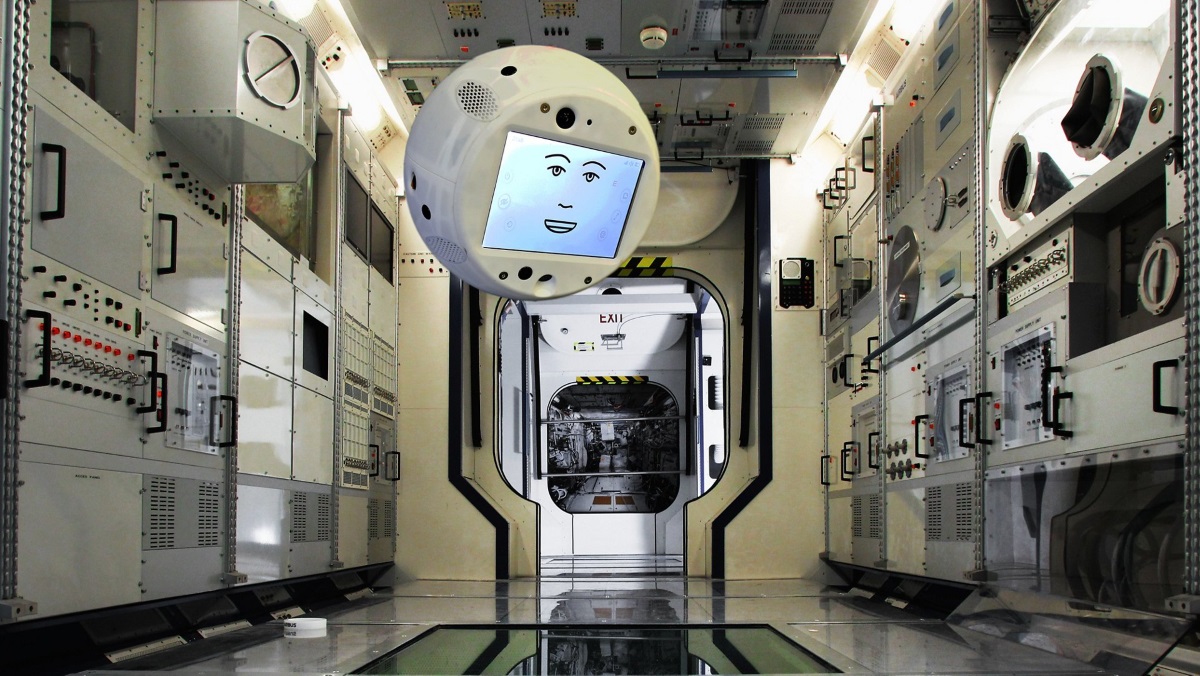Human-machine interaction in space – first technology experiment using artificial intelligence on the ISS.
The Crew Interactive MObile companioN (CIMON) is able to see, hear, understand, speak – and fly. It is roughly spherical, has a diameter of 32 centimetres and weighs five kilograms. Its robotic predecessor was Professor Simon Wright’s ‘flying brain’, with sensors, cameras and a speech processor in the 1978 cartoon series, ‘Captain Future’. Almost 40 years later, CIMON, the astronaut’s flight attendant and assistance system, could turn science fiction into ‘science fact’.
From summer 2018, CIMON will become the new ‘crew member’ on the International Space Station (ISS), in order to demonstrate cooperation between humans and intelligent machines in the form of a technology experiment. The interactive astronaut assistant was developed and built by Airbus in Friedrichshafen and Bremen on behalf of the German Aerospace Center (Deutsches Zentrum für Luft- und Raumfahrt; DLR) Space Administration and funded by the German Federal Ministry for Economic Affairs and Energy (Bundesministerium für Wirtschaft und Energie; BMWi). Watson AI technology from the IBM Cloud provides voice-controlled artificial intelligence. The human aspects of the assistance system were co-developed and supervised by scientists at Ludwig-Maximilian University Hospital in Munich (Klinikum der Ludwig-Maximilians-Universität München, LMU). An approximately 50-strong DLR, Airbus, IBM and LMU project team has been working on implementing CIMON since August 2016. “CIMON is globally unique in this form,” summarises Christian Karrasch, CIMON Project Manager at the DLR Space Administration in Bonn. “We have implemented this experiment in a very short time. It is intended to show to what extent the astronauts’ work can be supported in the European Columbus module on the ISS and relieve them, in particular, of routine tasks. Ideally, the astronauts could use their time better and more effectively. With CIMON, we are entering new territory and operating at the threshold of technological feasibility.”
Link to full article: https://www.dlr.de/dlr/en/desktopdefault.aspx/tabid-10212/332_read-26307/#/gallery/29911
Visits: 211
